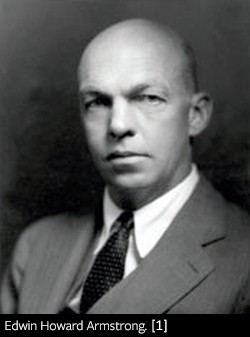
Armstrong worked intensely at his profession throughout his life, starting with the invention of the regenerative receiver while still an undergraduate student, continuing with the super-regenerative and super-heterodyne circuits and wideband FM radio, and ending with FM multiplexing a few months before his death in 1954. During his lifetime he won many awards and numerous honorary degrees. The importance of his work drew him into contact with the other giants of radio and electronics, and, as may be expected, some of these interactions developed into rivalries, which spurred the profession but ultimately hurt Armstrong personally. Armstrong was also a dedicated, civic-minded individual who aided the United States in both world wars. He was honored by both the American and French governments for these contributions.
The list of Armstrong's major honors is long and includes the Medal of Honor from the Institute of Radio Engineering, 1917; the Chevalier de la Legion d'Honneur in 1919 from the French government; the first-ever Armstrong Award from the Radio Club of America, named after him to honor his achievements in radio, in 1935; Columbia’s Egleston Medal in 1939; the Holley Medal from the American Society of Mechanical Engineers, 1940; the Franklin Medal from the Franklin Institute, 1941; the Edison Medal from the American Institute of Electrical Engineers, 1942; and in 1947, the Medal for Merit with a presidential citation, the highest civilian award given by the U.S. government.
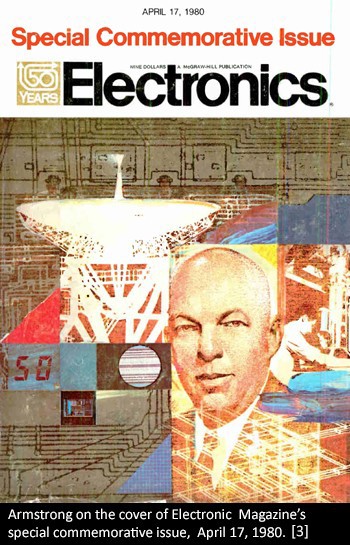
In 1980, Electronics Magazine published a 650-page special issue to commemorate 50 years of achievement in electronics; on its cover, the only portrait of an individual inventor is that of Edwin Howard Armstrong.
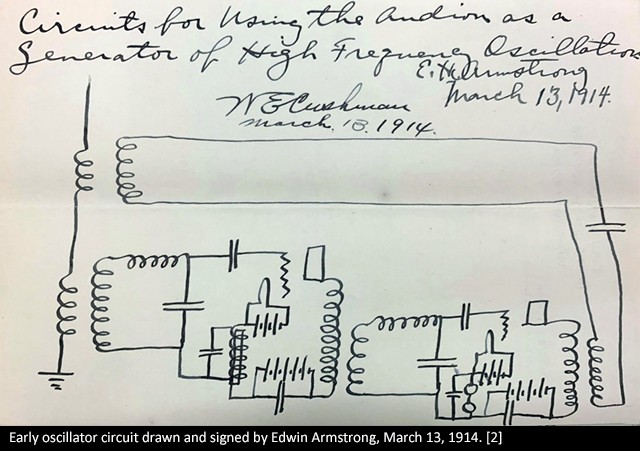
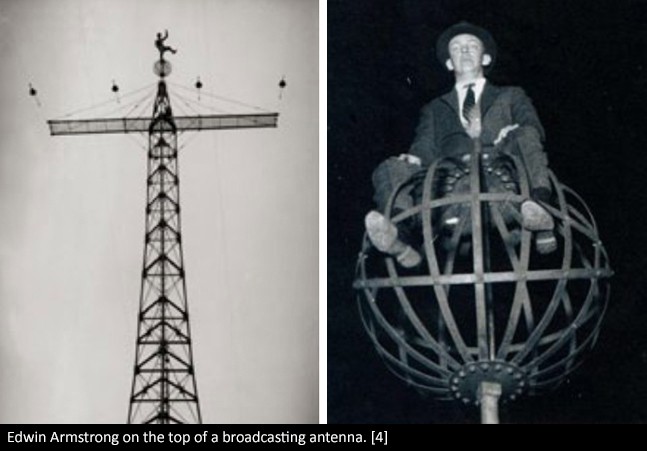
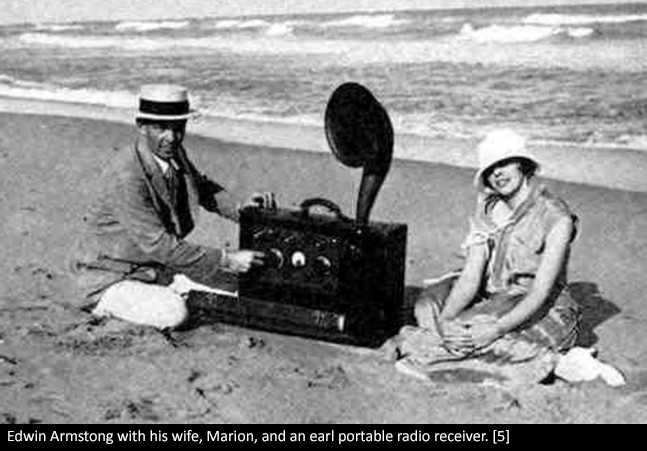
Sources
- A. M. McMahon, The Making of a Profession: A Century of Electrical Engineering in America, IEEE Press, 1984.
- W. R. MacLauring, Invention and Innovation in the Radio Industry, MacMillan, 1949.
- Special commemorative issue, Electronics Magazine, April 17, 1980.
- New York Section, IRE, Radio Pioneers 1945, commemorative publication.
- Y. Tsividis, “Edwin Armstrong: Pioneer of the Airwaves”, Columbia Magazine, Spring 2002; https://magazine.columbia.edu/article/edwin-armstrong-pioneer-airwaves
Image Credits
[1] University Archives, Rare Book & Manuscript Library, Columbia University Libraries.
[2] Wikipedia (https://en.wikipedia.org/wiki/Edwin_Howard_Armstrong). Accessed 7/4/21.
[3] University Archives, Rare Book & Manuscript Library, Columbia University Libraries.
[4] Left - Stony Brook University (https://www.stonybrook.edu/commcms/electrical/news/2018/armstrong_award.php). Accessed 7/4/21. Right - Playout (https://playout.tvnewscheck.com/2014/05/23/part-two-edwin-armstrongs-fm-radio-tower-saved-nyc-broadcasters-after-911/). Accessed 7/4/21.
[5] Wikipedia (https://en.wikipedia.org/wiki/Edwin_Howard_Armstrong). Accessed 7/4/21.